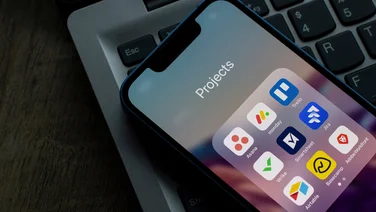To help us provide you with free impartial advice, we may earn a commission if you buy through links on our site. Learn more

ADrive is a Cloud backup utility with built-in synchronisation for those who want to access their files from any device.
ADrive’s price will likely be a big draw for potential customers, with a tempting free 50GB storage to get you started. The cheapest paid-for tariff – Personal Premium – gets you 100GB of storage for $2.50 (around £1.50) a month, with a maximum file size limit of 16GB. If you subscribe for a full year up front, this price goes down even further, giving you two months free. There’s no option for unlimited backup storage, as offered by rivals LiveDrive and SquirrelSave, which is a shame.
While most backup services will automatically apply encryption to your backed-up files or at the very least offer encryption while the data is being transferred to their servers, ADrive doesn’t encrypt any backup data at all if you’re a free user, and will only adopt SSL encryption for data transfers if you’re a paying user. In the age of crafty governments and other hackers intercepting your data, we’re not convinced we’d be happy with this arrangement.
DESKTOP APPLICATION
At first glance, it’s clear that the desktop application has a few shortcomings. It’s missing several features available in rival backup services, for example, such as advanced scheduling options, instant file updates or bandwidth throttling.
One thing ADrive does support is multiple backup jobs, which means you can choose to have certain folders backed up more regularly than others, or have larger folders backed up in the middle of the night. This will be particularly useful for those working with big media files who don’t want their bandwidth hogged by huge uploads during the day.
Otherwise, the software is very sparse. We were particularly disappointed by the total lack of a file restorefunction. If you need to recover a file you’ve backed up, you’ll need to use ADrive’s unwieldy web interface (see below), which is far from ideal.
The Cloud synchronisation tool built into the software works as we’d expect; in order to make a file available to other devices, you simply drag and drop it into the ADrive drive, at which point it will be uploaded to the Cloud.
To access a synced file on another computer, you can either download the ADrive desktop application, or use one of the many web-based and remote access tools that are available. These include WebDAV, which allows you to use ADrive as a network storage device, as well as FTP access.
WEB INTERFACE
Your backed-up and synchronised files can be accessed through ADrive’s web interface. This is where previous versions of files can be found and downloaded, so if you want to access an older version of a document or a file you accidentally deleted, you should be able to recover it here. You can also use this interface to share files with friends and colleagues, and choose when share links will expire.
Unfortunately, ADrive’s older files coverage is far less extensive than that of other Cloud services we’ve tested. ADrive says file snapshots are taken every Sunday and are available for seven days, and it also takes a daily snapshot, which is available for two days. Other backup firms are much more generous in this regard, generally with at least 30 days of file history to work with.
The latest versions of your files are available in the file browser, and although we were initially pleased that ADrive has web-based document editing service Zoho built in, we soon discovered significant problems. Firstly, changes we made from within the web interface weren’t reflected in the copies of documents stored in the ADrive folder on our desktop PC, even though ADrive had attempted to modify them. With spreadsheets, things got even worse: the changes we made weren’t reflected in our local files, and yet Zoho had somehow broken the formatting of our spreadsheet and created a copy of the file on our machine that couldn’t be opened by Excel. This meant we could never trust Zoho to handle web-based document editing, which undid the benefit of having the software.
MOBILE APPS
ADrive mobile apps are available for both iOS and Android phones and tablets. These apps look extremely outdated, and while the iOS software has most of the functions we’d expect, such as file downloads and sharing buttons, the Android app is as basic as they come, with a fiddly user interface and no file sharing options. While it’s good to have access to files on the move, there are certainly better mobile offerings out there if accessing files on a handheld is important to you.
ADrive is exceptionally cheap, but with this bargain price you get a basic product that is lacking in many of the key areas in which its rivals excel. Its desktop app is too simplistic, while its web interface is tricky to use and damaged some of our files when we tried to edit them. Along with the substandard mobile apps, this all makes ADrive hard to recommend, despite its low price.






